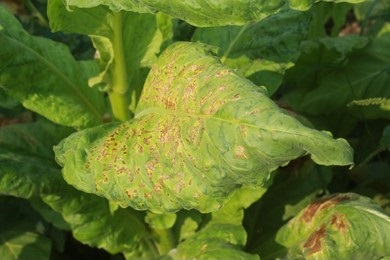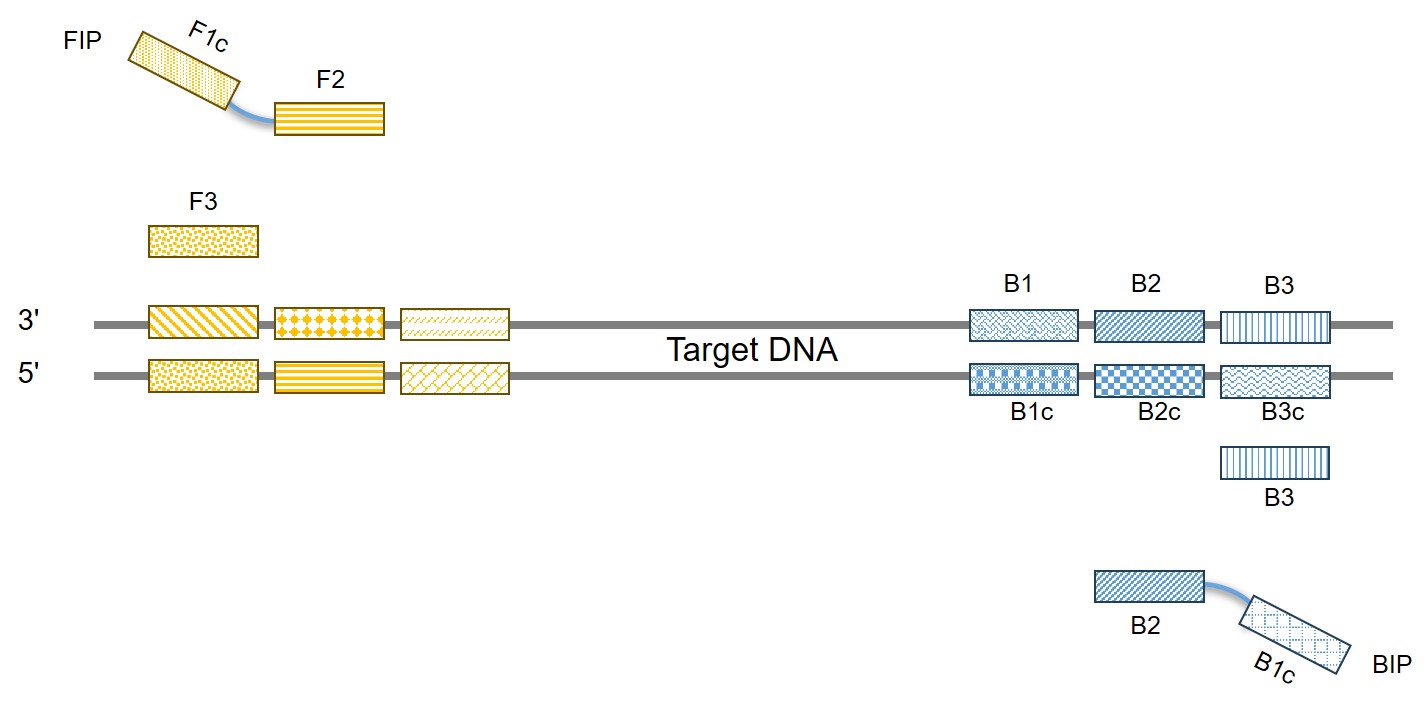Loop-Mediated Isothermal Amplification for Plant Pathogen Detection
Loop-mediated isothermal amplification (LAMP), as an isothermal nucleic acid amplification technology, can rapidly complete the amplification of nucleic acids by only holding at a constant temperature for a few minutes. Lifeasible has established a highly efficient, rapid, and accurate method of detecting plant pathogens using LAMP, which can detect viruses, bacteria, parasites, and fungi.

In LAMP reaction, primer design is complicated, the key to determining whether the LAMP method can have a high efficiency and specific response lies in the rational design of the primer; only the best primer can produce a chain substitution reaction with Bst polymerase. Therefore, we will design primers with high specificity for the 6 regions of the target genes according to your needs, including the internal primers FIP (F1c, F2) and BIP (B1c, B2) and the external primers F3 and B3. After the reaction is finished, we will determine the results by agarose gel electrophoresis, turbidimetry, fluorescence colorimetric assay, and fluorescence real-time quantitative assay.
 Figure 1. The schematic diagram of LAMP primers.
Figure 1. The schematic diagram of LAMP primers.
- Reverse transcription LAMP (RT-LAMP) is a LAMP-based RNA molecular detection technology 100 times more sensitive than RT-PCR. RT-LAMP amplification is based on the same principle as LAMP. Still, we add reverse transcription reagents to the reaction system so that reverse transcription of RNA and LAMP amplification of cDNA can be done in the same tube without step-by-step procedures. With this technology, we can detect Japanese yam mosaic potyvirus (JYMV), Potato virus Y (PVY), and so on.
- For Hop Stunt viroid (HSVd), a microscopic pest factor that causes plant diseases, we have established a method for detecting and identifying HSVd based on LAMP technology, which provides an effective tool for detecting HSVd accurately, uniformly, and rapidly, and can be used to improve the efficiency of quarantine inspection of HSVd and to prevent the discovery, transmission, and other aspects of HSVd. It can be used to improve the efficiency of quarantine inspection and prevent the detection and transmission of HSVd.
- Cotton leaf curl Multan virus (CLCuMuV) is the main virus of cotton leaf curl Multan disease. We have established a LAMP-based assay for the rapid, efficient, highly sensitive, and specific detection of CLCuMuV in a wide range of plants to help prevent the transmission and spread of this virus.
- Our established LAMP-based assay based on the CaMV35S promoter can detect the Cauliflower mosaic virus (CaMV) with 10-100 times higher sensitivity than conventional PCR.
Types of plant pathogens that can be detected
- Tomato aspermy virus (TAV)
- Tomato yellow leaf curl virus (TYLCV)
- Tomato spotted wilt virus (TSWV)
- Squash leaf curl virus (SLCV)
- Cymbidium mosaic virus (CyMV)
- Tobacco mosaic virus (TMV)
- Cucumber mosaic virus (CMV)
- Zucchini yellow mosaic virus (ZYMV)
- Wheat yellow mosaic virus (WYMV)
- Odontoglossum ringspot virus (ORSV)
- Peanut stripe virus (PStV)
|
- Rice stripe virus (RSV)
- Rice tungro bacilliform virus (RTBV)
- Rice tungro spherical virus (RTSV)
- Bean pod mottle virus (BPMV)
- Cowpea severe mosaic virus (CPSMV)
- Actinidia chlorotic ringspot-associated virus (AcCRaV)
- Potato spindle tuber viroid (PSTVd)
- Apple scar skin viroid (ASSVd)
- Peach latent mosaic viroid (PLMVd)
- Chrysanthemum chlorotic mottle viroid (ChCMV)
… |
Advantages

Lifeasible also constantly updates the categories of plant pathogens that can be detected. Please contact our staff for more information on how LAMP/RT-LAMP can be used for plant pathogen detection.
For research or industrial raw materials, not for personal medical use!

 Figure 1. The schematic diagram of LAMP primers.
Figure 1. The schematic diagram of LAMP primers. 